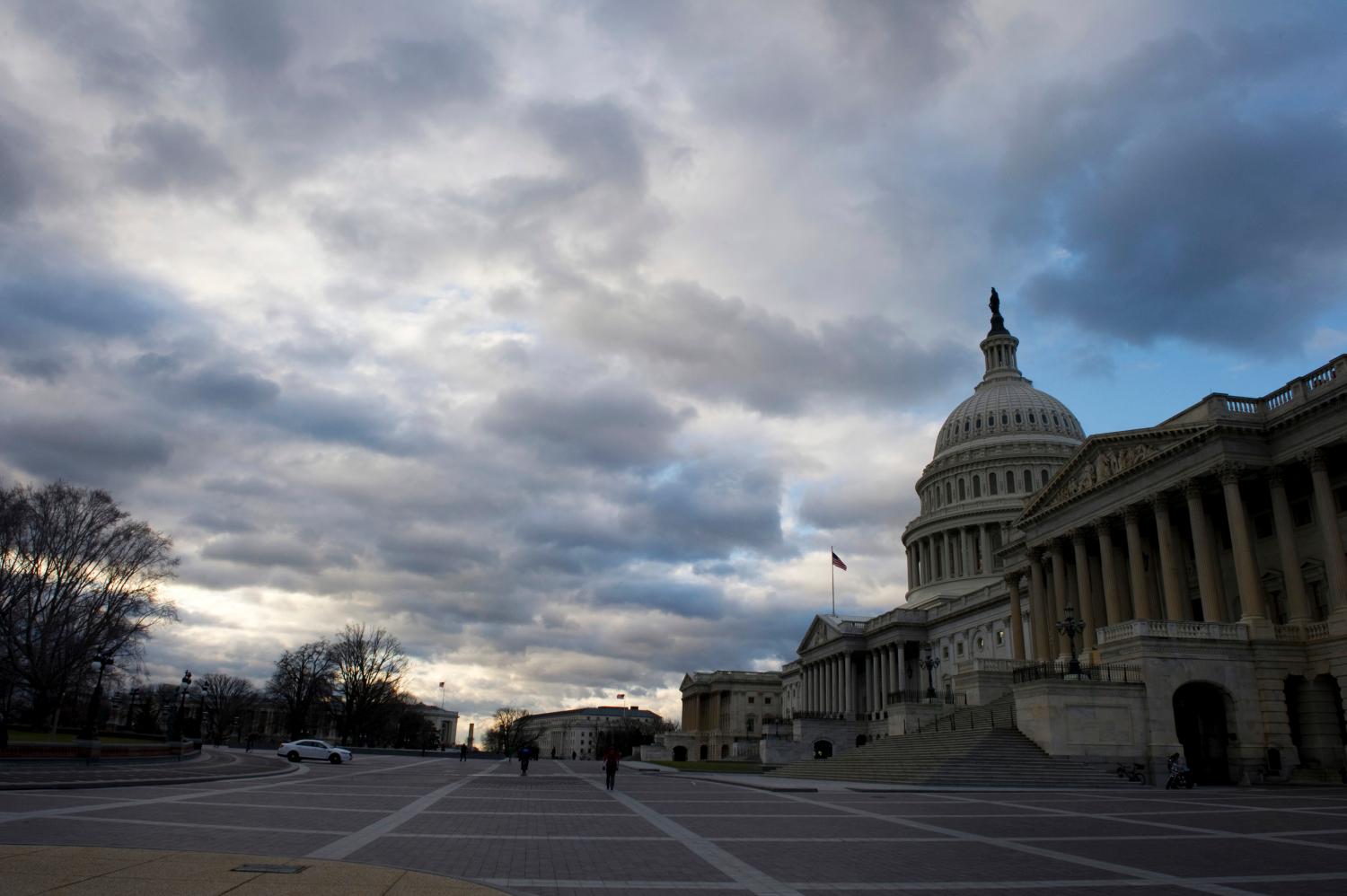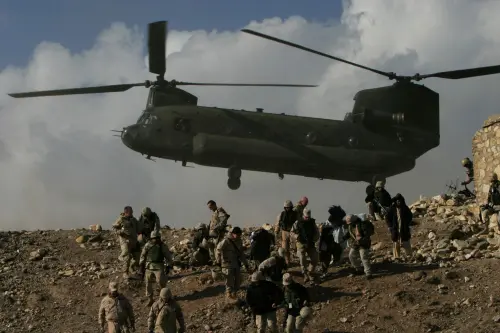As Afghan opposition groups and U.S. armed forces continue their successes in the war against the Taliban and al Qaeda, the American debate has quickly turned to the question of where the fight against terrorism should go next. In numerous public statements, President Bush has talked about a wide-ranging campaign against global terrorism. He has not committed to military operations against any other countries or terrorist organizations, but he has made it clear that the broader struggle against terrorism will be a long-lasting effort that could include the use of military force in regions beyond Afghanistan.
A strong case can be made that Iraq’s leader, Saddam Hussein, is so threatening to his people, his neighbors, and U.S. interests that the United States should use military force, unilaterally if necessary, to overthrow him. Proponents of such an approach, however, often underestimate the costs and risks involved. Instead of mounting a U.S. attack on Iraq as part of the current campaign, the Bush administration should take advantage of its success in Afghanistan to pressure allies and regional players to isolate Saddam’s regime and to reinforce deterrence in an unambiguous way. A new “Bush Doctrine” should announce that Baghdad’s support for terrorist networks, transfer of weapons of mass destruction to terrorist groups or individuals who target the United States, or the harboring of such terrorists will be considered an act of war and lead immediately to an American military intervention to overthrow the regime.
POLICY BRIEF #93
Targeting Iraq
There are many potential targets for a possible post-Afghanistan phase of the war—Abu Sayyaf guerrilla bases in the Philippines, for example, as well as terrorist headquarters and training camps in Somalia, Syria, and Lebanon. But none is more consequential or more prominent in the current policy debate than Saddam Hussein’s regime in Iraq. Numerous outside analysts and (more privately) some senior Bush administration officials are already making the case that the next phase in the war on terrorism should be an effort to overthrow the Iraqi regime—if necessary, with U.S. military force. On November 26, President Bush himself appeared to raise the ante on the Iraq debate, stating that Saddam would “find out” what was in store for him if he failed to heed international demands to allow inspectors into Iraq to look for weapons of mass destruction programs. While Bush’s statement may have been nothing more than a reiteration of existing U.S. policy, it was interpreted by many as a conscious effort to remind the world of the dangers posed by Saddam and to begin to create a legal and political predicate to justify an eventual American attack against him. Many overthrow advocates argue that the United States should remove Saddam regardless of whether Iraq was involved in the September 11 terrorist attacks or not.
Absent compelling evidence of significant Iraqi involvement with the al Qaeda network or the events of September 11, the likely costs and risks of a commitment of American military forces to a regime-change campaign in Iraq would outweigh the benefits. A U.S. overthrow campaign would entail a large-scale military operation that the United States would probably have to undertake essentially alone; the increased risk of triggering terrorist attacks against American or allied targets; significant American casualties given the potential for intense urban combat and Iraqi use of chemical and biological agents; and the likely need for a long-term American military presence in Iraq to avoid regional destabilization. While these costs and risks are not so high as to rule out a possible overthrow policy under certain circumstances, they should be sobering to any advocate of sending U.S. troops to war to change the Iraqi regime. The central assumption behind this argument is that Saddam—unlike the religiously motivated Taliban/al Qaeda network—is more interested in preserving his power, his regime, and his life than in carrying out acts of terror against American interests. If that assumption proves wrong and evidence emerges of Iraqi sponsorship of terrorism against the United States, the considerable costs of a U.S. intervention to overthrow Saddam would be worth paying—whether the rest of the international community was on board or not.
The Challenge of Overthrowing Saddam Hussein
Even short of any new Iraqi acts of aggression or terror, the removal of Saddam Hussein from power would be highly desirable, and the arguments that force should be used to remove him are not trivial. Saddam has shown great determination to produce weapons of mass destruction and has a track record of ruthless aggression against his own people and several of his neighbors, including Iran, Israel, and Kuwait. He has a proven desire for vengeance—as evidenced in the attempted assassination of former President George Bush in 1993 and the murder of two of his own sons-in-law after they briefly defected to Jordan in 1995. There is clear evidence that terrorists, even if not part of the al Qaeda network, have been trained in Iraq in the past. Although Saddam and al Qaeda are adversaries in many ways—Saddam is a committed secularist, except where it suits him to pretend otherwise, and al Qaeda claims to be motivated by religion—it is not implausible that they would join forces to attack the United States. The apparent meetings in Prague between an Iraqi intelligence official and hijacker Mohammed Atta in 2000 and 2001 suggest that at least a limited form of contact has already occurred. Even as policymakers contemplate the many potential benefits of removing Saddam from power, however, they should not overlook the likely costs, risks, and consequences of an attempt to do so.
Air Power and Opposition Forces Alone Would Not Suffice.
Despite the claims of many regime-change proponents, policymakers should be under no illusion that Saddam could be quickly overthrown by the application of U.S. airpower in support of a ready-made, armed opposition. While improvements in U.S. air capabilities since the Gulf War—including Global Positioning System (GPS)-guided bombs and unmanned aerial vehicles (UAVs) coupled in near real-time to command centers and manned aircraft—have been significant, they would almost certainly not be enough to make possible victory by air power alone. Even GPS-guided bombs are generally not accurate enough to destroy armor, and Saddam would be sure to position much of his force (and weapons of mass destruction) in crowded cities, schoolyards, and hospitals, greatly complicating U.S. targeting options. The successful use of laser-guided bombs against stationary Iraqi tanks in the Kuwaiti desert in 1991—known as “tank-plinking”—would be difficult to replicate in the complex terrain and urban areas in central Iraq.
Iraqi opposition forces are deeply divided and have a history of infighting. Even if aggregated, the various Kurdish, Shi’a, and Sunni opposition forces have perhaps one-tenth the strength of Iraqi armed forces. They would be outnumbered more than two to one just by Saddam’s most dedicated fighters, his Special Republican Guard and Republican Guard forces, totaling about 100,000 personnel.
By contrast, in Afghanistan, Taliban forces were often exposed in trench lines on open desert, where U.S. special operations forces could approach them and direct air strikes against them. Taliban resupply caravans had to traverse roads in open country, making them relatively easy targets for American air power. Taliban forces also appear to have done a poor job of establishing redundant command-and-control infrastructure that could survive a U.S. attack.
To be sure, if convinced that Saddam’s regime were on its way out, much of the Iraqi army—and perhaps even some of the privileged Republican Guard—would probably stop fighting or tip to the opposition (if they could). Counting on the Iraqi army to quit in the absence of a credible American threat on the ground, however, would be a huge gamble. Thousands of friendly forces could again be slaughtered, Saddam could still hold onto power, and the international coalition against terrorism could be dismayed and increasingly fractured by what it would correctly view as not only unilateralist but feckless American leadership.
For these reasons, if the United States wants to overthrow Saddam, a large-scale U.S. force akin in capability to the one used in Desert Storm II would probably be needed. At a minimum, it would have to be prepared and deployed, even if it were ultimately not used. U.S. forces would not need to total 500,000—roughly the number that was deemed necessary to evict the Iraqi army from Kuwait in 1990—but they would have to be large and credible.
The United States Would Essentially be Acting Alone.
If it decided to overthrow Saddam Hussein in the absence of evidence of his involvement in the September 11 terrorist attacks, the United States would run the risk of having to undertake this enormous military and political challenge essentially alone. Critical potential allies such as Turkey and Saudi Arabia worry that the United States might attack just long enough to hurt the Iraqi people without jeopardizing Saddam’s hold on power or that even a successful attack would leave Iraq in chaos, with the possibility that its borders would be destabilized in the Kurdish north and Shiite southeast.
The lack of likely allies poses significant problems. Among other things, a military campaign might have to be staged mainly from tiny Kuwait, and this is assuming Kuwait would be supportive under such circumstances, which is hardly a certainty. Building up an invasion force with Kuwait’s limited facilities could easily take half a year.
A lack of international support by itself should not automatically be an impediment to action. If the costs of inaction were high enough, American interests might require the United States to act unilaterally. Moreover, we should not forget that allied support is likely to be largely a function of other countries’ perception of the level of U.S. determination and the degree of American success. The American legal case for action—Saddam’s refusal to comply with UN Security Council Resolution 687, which calls for a verified end to Iraqi weapons of mass destruction (WMD) programs—gives Washington at least some basis for legitimate unilateral action. The fact that the world would be better off if Saddam were gone can hardly be challenged. The material benefits that would accrue to countries like Turkey, Russia, Jordan, and France if a post-Saddam Iraq could be stabilized would give at least those countries a strong incentive to support the U.S. goal. Citizens of many other countries could sleep better at night knowing there was one less threat to their oil lifeline from the Persian Gulf, and Arab states would be relieved when sanctions were lifted on a post-Saddam Iraq. But other countries would only support the United States if it succeeded in overthrowing Saddam and replacing him with a stable government. If America failed, the global coalition against terrorism could easily weaken, and the United States might enjoy less intelligence, law enforcement, and financial cooperation.
The Risk of American Casualties and Terrorist Attacks Would Grow.
Even if the United States managed to convince key allies like Saudi Arabia and Turkey to allow the use of their bases for troop deployments and air strikes, defeating Iraq would still be difficult. If bombing alone failed to produce the Iraqi defections assumed by regime-change proponents, substantial U.S. forces would have to go in on the ground, with a risk of significant casualties—possibly several times greater than the 400 Americans who died in Desert Storm. Saddam might well authorize use of chemical and biological agents against U.S. forces if his hold on power was threatened, increasing casualties further. The precise state of Iraq’s chemical and biological weapons programs is, of course, not known, but it is virtually certain that Baghdad has both.
The risks would not be confined to the battlefield. Saddam might also turn to terrorism against the United States or its allies—in Europe, Israel, or elsewhere in the Middle East—in a desperate attempt to save his life or in a determination to bring down as many of his enemies with him as possible. During the 1990-91 Gulf War, Saddam calculated that Americans would not be prepared to accept significant casualties, and it is not clear that he has been persuaded otherwise by American policy toward a range of conflicts since then. Saddam is almost certainly wrong in this assumption, but he would not find that out until it was too late. With his back against the wall, he might judge that he had little choice but to use his weapons of mass destruction in a last-ditch attempt to turn the Americans back, or to kill as many of them as he could.
What To Do After Victory?
Even in the face of all these obstacles, risks, and costs, the United States would almost certainly prevail in an attempt to unseat Saddam Hussein. However, to avoid the risk of prolonged conflict among various Kurdish, Shi’a, and Sunni groups, which could draw Iraq’s neighbors into a regional conflict, the United States would need to lead a major international effort to help form a stable national government.
Such an effort could require a multi-year military presence by tens of thousands of U.S. military forces, implying annual military costs of at least $10 billion. (In Bosnia, one-eighth the size of Iraq and with one-sixth the population, NATO deemed it necessary to deploy over 50,000 peacekeeping troops, at a cost of some $10 billion per year; six years later nearly 20,000 troops remain). Residual terrorist attacks against U.S. forces in Iraq could be expected—as could considerable Arab resentment against the extended American presence. Again, the path to success could probably be found, but the costs would be considerable.
A Deterrable Regime
Instead of incurring these high costs and significant risks, the United States should follow a different course—a reinforced policy of deterrence articulated as a new “Bush doctrine” that would explicitly threaten regime change in response to Iraqi acts of terrorism or aggression. As threatening and dangerous as Saddam Hussein may be, the track record suggests that he can be dissuaded from undertaking actions that he believes would likely lead to his overthrow.
During the Gulf War, Saddam refrained from using the weapons of mass destruction we now know he had, understanding (following explicit threats from U.S. Secretary of State James Baker and Secretary of Defense Richard Cheney) that to do so would almost surely lead to his downfall. He has used chemical weapons against Iran and against his Kurdish citizens, but never against a country—such as Israel or the United States—that could destroy him. He moved brigades southward towards Kuwait again in 1994, only to pull back once the Clinton administration mounted Operation “Vigilant Warrior,” a deployment of tens of thousands of troops. He interfered with the work of foreign weapons inspectors frequently, and ultimately expelled them, but never killed or harmed them. He brutally attacked Shia resistance forces in southern Iraq in 1991, after it became clear that the first Bush administration would not interfere to stop such operations, but generally avoided brutality against Kurds in the north once the United States made clear its commitment to their security. In 1996, he did direct an incursion into Kurdish parts of Iraq—but only after internecine warfare among Kurds and an explicit invitation to him to intervene by one of the Kurdish factions made it unlikely that the United States would be in a position to oppose him.
Saddam has obviously also shown a proclivity for risk-taking, not least in his decision to invade Kuwait (and hold it until U.S. forces expelled him) and his attempted assassination of a former American president. But none of his aggressions, he rightly calculated, seemed likely to lead to his overthrow, with the possible exception of the assassination, had it been successful. That explains, perhaps, why Saddam appears not to have repeated the attempt. The evidence illustrates that Saddam Hussein is a ruthless and brutal dictator, but also that he is bent on self-preservation, and thus deterrable.
Saddam might, of course, think he could support al Qaeda or a similar organization and not be caught doing so. But he also knows that the United States has a proven ability to track meetings between his agents and potential terrorists and that it can often trace the origins of biological agents based on their genetic content, particle size, chemical coating, or other attributes. Thus, while there is a chance his cooperation with terrorists could succeed in escaping detection, there is a better chance that the United States would be aware of his activities. Saddam would also be on notice that if his actions followed those of the Taliban, he would meet their fate.
Conclusion
The United States should not now mount a large ground operation to overthrow Saddam Hussein, given the prospect that it could entail significant casualties, increase the risk of terror attacks against the United States, and require a long and costly occupation even after Saddam was gone. Anything short of a ground invasion, however, would run a high risk of failure. Despite his brutality, almost all available evidence suggests that Saddam Hussein can be deterred because he values his hold on power and his own life more than any ideological goal and more than revenge against the United States. Future acts by Saddam, or further evidence about his links with al Qaeda, could lead to a different assessment, and there should be little doubt that the American people would support a campaign to overthrow Saddam in such circumstances despite the likely casualties. At present, however, he appears to be contained every bit as well as the North Korean leadership—and much more tightly than was the Soviet Union during the cold war.
This is hardly a case for complacency, however. The United States needs to complement its containment policy by making it unmistakably clear to Saddam Hussein that renewed Iraqi aggression, support for terrorism against the United States or the transfer of weapons of mass destruction to terrorist groups would lead to a concerted U.S. campaign to overthrow his regime. While the exact threshold for when an overthrow policy would be triggered might be hard to define precisely (indeed there could be some merit in a small measure of ambiguity for the sake of deterrence), certain “triggers” could be made very explicit: any transfer of weapons of mass destruction to al Qaeda or similar groups; direct complicity in the September 11 attacks or any such attacks in the future; involvement in the September-October 2001 anthrax attacks; or the harboring of groups that carry out terrorism against the United States. Bush could also make clear that a range of other Iraqi actions unrelated to terrorism—significant progress toward the production or acquisition of a nuclear weapon; another attempted invasion of Kuwait; an attack on Israel; or the use of force against American troops—would also be considered redlines that would produce a policy of overthrow.
To back up the new strategy, the United States should continue to keep adequate military forces available for the job on potentially short notice, develop concrete plans to work with opposition groups for a strategy of overthrow, and mount a diplomatic case with key allies to win their support should an invasion become necessary.
At the same time, the Bush administration should accelerate efforts to persuade Russia and some of Iraq’s neighbors to move forward with a new sanctions regime that would crack down on Iraqi smuggling, focus sanctions more specifically on the Baghdad leadership and weapons of mass destruction capabilities, and make civilian goods available for easier import into Iraq. Meaningful searches for Iraq’s WMD capabilities would also be desirable, but only if they would be more effective than those of the late 1990s. America’s allies and the regional powers need to understand that if Iraq cannot be contained with sanctions and stronger nonproliferation efforts, Washington may ultimately have to use force to achieve that goal.
The U.S. administration should make it clear to the rest of the world that it cares a lot more about the well-being and future of the Iraqi population than does Saddam Hussein, and it should hold out a vision of American support for a future Iraq under a different regime. Reinforced deterrence, more vigilant nonproliferation efforts, and smarter sanctions will not make the Persian Gulf region risk-free or immediately free the Iraqi people from a brutal dictatorship. But they will serve the core goal of helping to prevent future terrorist actions like those of September 11 at a reasonable military and strategic cost.
The Brookings Institution is committed to quality, independence, and impact.
We are supported by a diverse array of funders. In line with our values and policies, each Brookings publication represents the sole views of its author(s).





